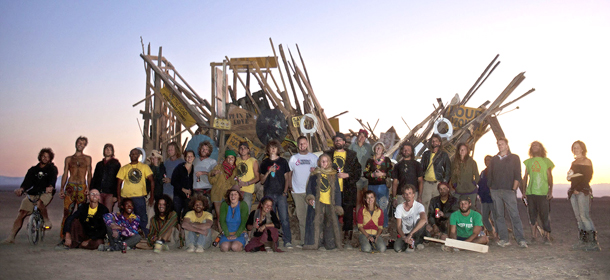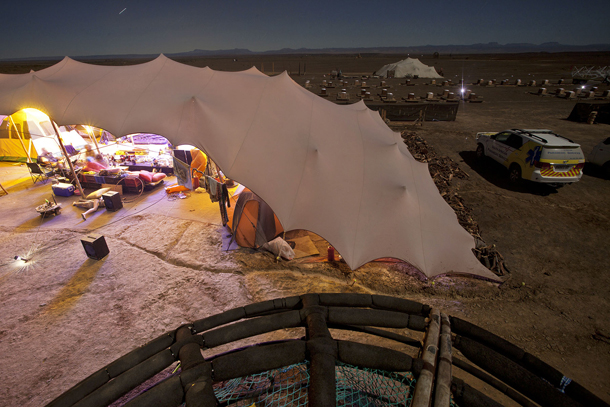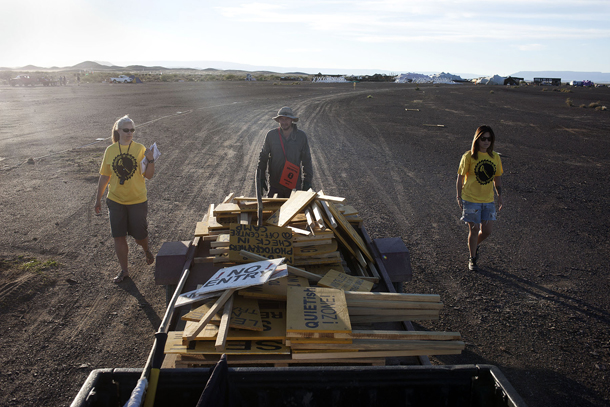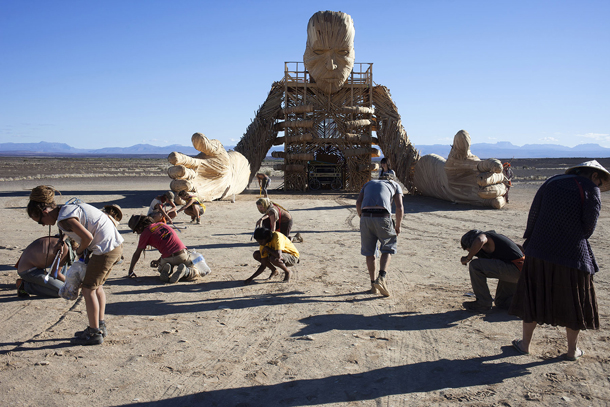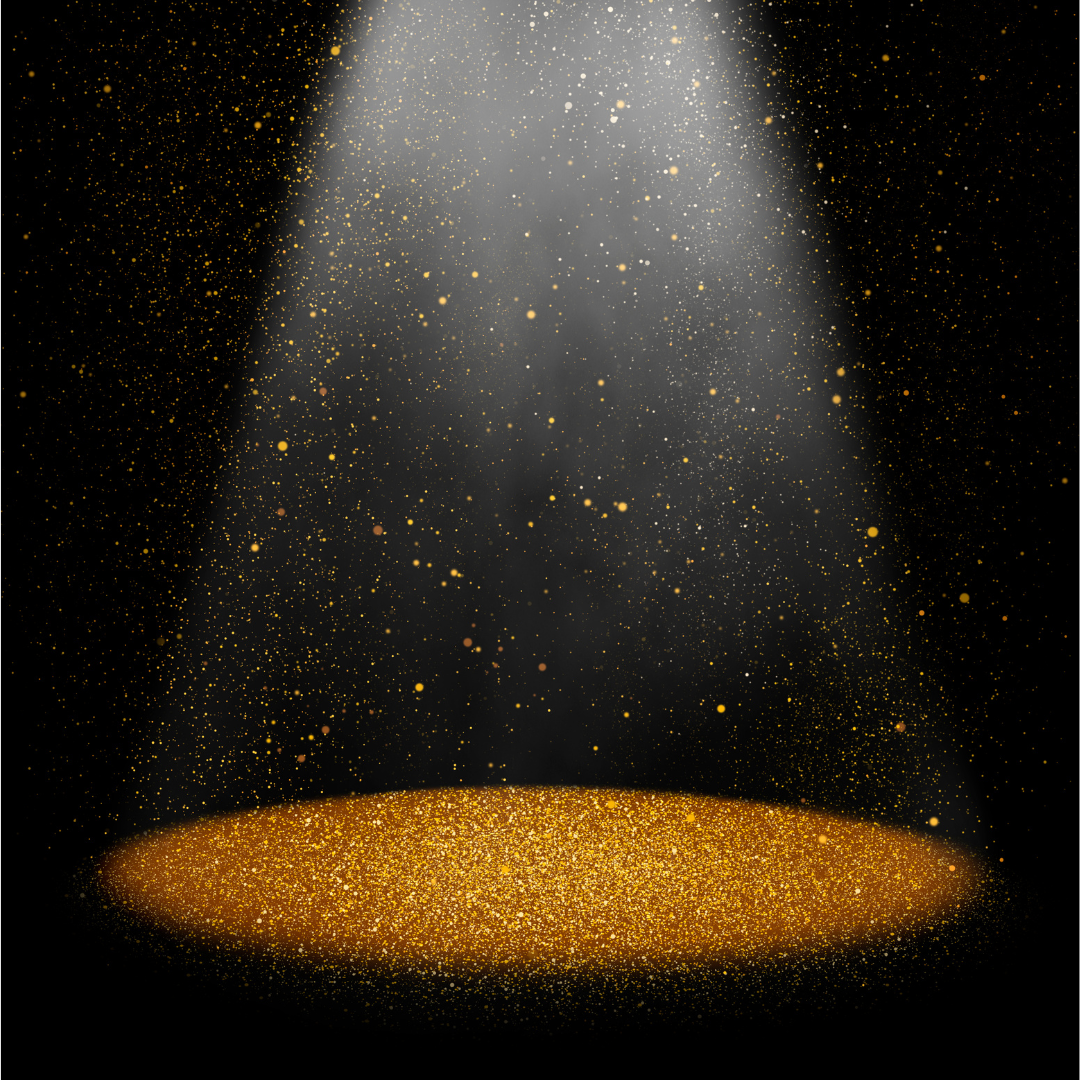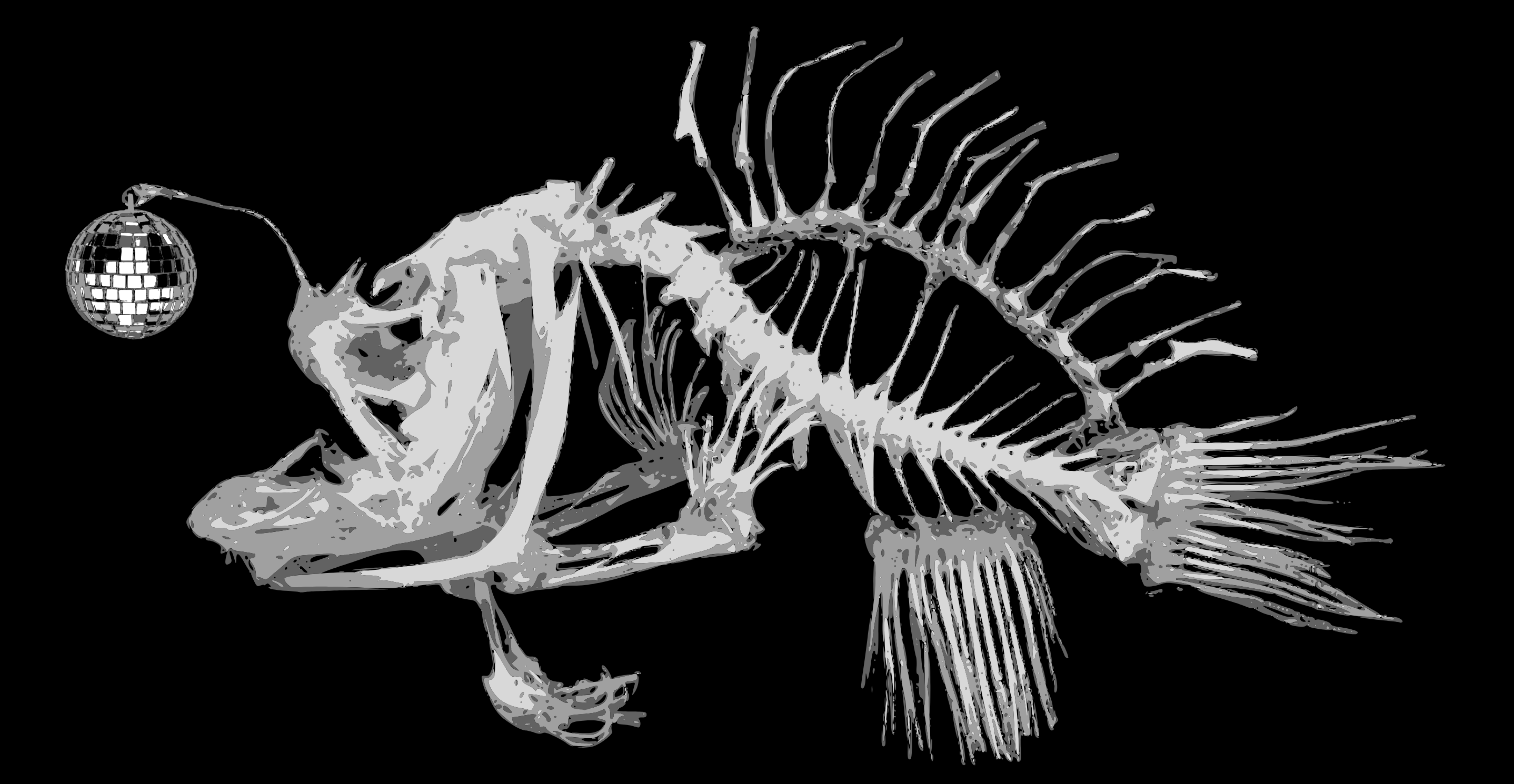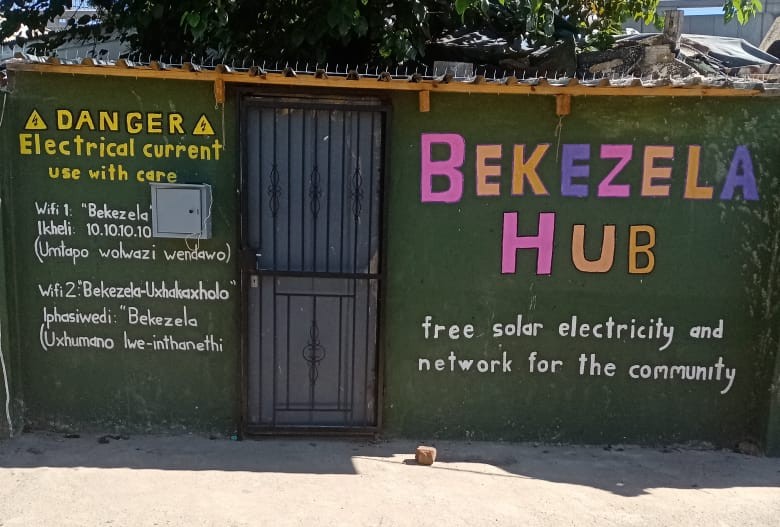(words & photos: Damien Schumann)
Desert beauty doesn’t come at face value. Its magnificence hides under rocks and in between cracks. Not only does one have to look for it, but one has to endure physical extremity in order to find it. It’s a beauty that takes an education to appreciate, and once this is learned, the barren expanse of rock and shrubbery looks quite different. The dry heat is no longer uncomfortable, and a sudden sandstorm or flood is taken in its stride. Beauty lies in understanding what one is looking at. The harsh climate of the desert means that it is impossible to survive independently, and that’s where the essence of desert life lies, in collaborating to overcome the extremes.
At 6 ‘o clock on the Binnekring, there is a large plot of land blockaded off with shade cloth walls and many unfriendly sign posts generally telling everyone to sod off and not to touch anything. The folk that do pass in and out of there walk with a different urgency, they look more weathered than the rest, and there’s a good chance their first shared dialogue will be quite offensive. Don’t take it personally, this is the Department of Public Work’s (DPW) way of showing affection. And although they may not look like they’re having fun at surface value, there is a lot hiding behind these feral faces. For them AfrikaBurn, as it is known, is only a mere week amongst a month and a half of an intense labour of love against the elements to build a village infrastructure that can accommodate 8 000 people, and then return the land to its original state.
In the default world most of the crew hold an arts degree of some sort, but don’t let that become a stereotype – the likes of IT technicians and former military police also bring plenty to the table. Credentials here aren’t based on what certificates say you can do, cred comes from getting things done, awesomely. The crew of thirty wake up at sunrise every morning to work, not for money or because they have to, but because they love it. They obsess over exertion, creating, expressing, experiencing, learning, collaborating, and being a part of something. The pleasure comes in how something is done, not what is done – an important fact considering the primary job is the construction and maintenance of longdrops (you do the maths and make a mental picture of 8 000 people each having a morning squat for a week). For them it is a lifestyle that embraces the much-discussed principles of the Burn.
Participation and immediacy drive the entire operation of building Tankwa Town. And why, many would ask, would one want to spend six weeks building toilets when they could be doing something creative? As it was cleverly put during one discussion around the workshop, all DPW lacks is a manifesto. There is plenty statement in building a ring of shit-hot shithouses around the second biggest creative gathering of its kind, without which the festival would not be able to function. Leave no trace remember!
But this is not just about work. It is about self-expression and fun, and when one can do this through work, you know you’re getting things right. To a DPW crew member there is little differentiation between what goes into pummeling tons of rebar through bedrock or dancing the night away, ultimately because they all serve the same purpose. Work is a celebration of life, our skills, development and evolution. And once we’ve done something we might as well appreciate it, so we celebrate again. The DPW structure offers a freedom that is not possible in the city. To work without the need for money changes the purpose of work. To only be conscious of one’s immediate surrounds and tasks, free from internet, phones and Facebook pokes enhances engagement with duty and personalises relationships.
Freedom requires the governance of duty to maintain an environment constantly suited to free-thinking action, and that is what DPW provides. Upon the foundation of Tankwa Town each year there is the required duty to lay the infrastructure of a village. It isn’t a townhouse complex, it’s our village to be shaped and lived in how we deem fit. DPW has the unique opportunity to lay the first impressionable stones upon which anything is possible. This liberation into structured anarchy is one that is in constant change, but offers infinite opportunity to define oneself.
The burning of artifacts I found significant. It is the perfect way to recognise the quality of crafting a monument, without idolising the structure, and without letting the figure steal from the objectives in which it was originally created. For those that attend AfrikaBurn for the week of the gathering, this is a ritual that is built up to and (for many) celebrates the effort they have put into making the pilgrimage up to the Tankwa and the work they have put into their contribution for the gathering. For the DPW crew, this time comes later. It slowly creeps up on them unknowingly, until one day the main tent is dropped, and the landscape is flat again.
Six weeks have passed and all there is to physically show for it is an open stretch of land. In the dust one might find the odd memoir – a corroded screw or a bracelet that the MOOP crew missed. But leaving the Karoo under the chapped lips and dust-filled beards are the experiences of a lifetime. As anyone who lives through these experiences knows that the greatest award is to do it again.

